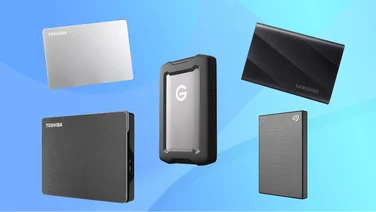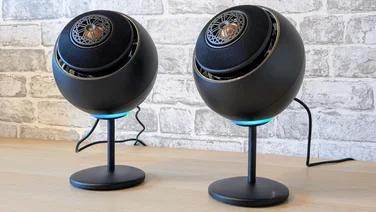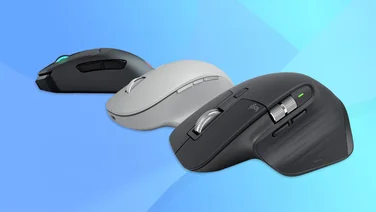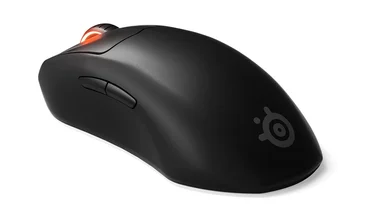To help us provide you with free impartial advice, we may earn a commission if you buy through links on our site. Learn more





















- Smooth, quiet key feel
- Bright, colourful LED lighting
- No need to install extra software
- Actuation point not adjustable
- ABS keycaps not PBT
The popularity of compact mechanical keyboards such as this Cherry XTRFY K5V2 has largely been driven by gamers, but there’s a lot to be said for buying a keyboard like this for day-to-day activities. It saves on desk space, means you don’t have as far to reach for your mouse and it’s easier to sling in a bag than a bigger, full-size or even 96% keyboard.
This keyboard is much more than just a compact keyboard aimed at gamers, however. It’s the first production keyboard to come with Cherry’s new MX2A red switches, promising superior performance for gaming – smoother, quieter, more precise than the outgoing MX red switches. It’s also, as it happens, a great switch for typing on, too.
Cherry XTRFY K5V2 review: What do you get for the money?
The Cherry XTRFY isn’t the cheapest of keyboards. Still, £139 (or £149 for the pictured transparent white model) is not an unusual amount to pay for a serious keyboard of any stripe. The latest premium models from SteelSeries, Roccat and Corsair often command prices of £150 and above, and the best mechanical keyboards for typing from Keychron can run to more than £200.I own a Keychron V6 with Brown switches and it’s the best thing I’ve ever typed on, so I was surprised to find that this Cherry comes close to competing with it for sheer typing comfort. The new MX2A switch has what Cherry describes as “precisely applied premium-grade lubricant and a new innovative spring design”; this translates to a smooth and quiet action, while its 45cN operating force, 2mm pre-travel and 4mm full travel strike the perfect balance of typability and gaming responsiveness. As a bonus, Cherry says each switch is good for 100,000,000 (yes, that’s 100 million) taps “without any loss in quality”.
Given the price and Cherry’s on-box fluff about customisability, it’s surprising you don’t get more in the box. Cherry supplies the keyboard itself and a USB-C to USB-A braided cable, a keycap removal tool and a couple of spare switches. There’s no wrist rest (you can order one for an extra €39), and no alternative for Mac users.
It’s also only available in 65% size, measuring 360 x 172 x 44mm (WDH). To be fair, I think this is the ideal compromise compact keyboard as it’s still compact, yet retains the cursor and document navigation keys of larger keyboards. But if you prefer a number pad and/or arrow keys, then this isn’t the keyboard for you.





















You do, however, get lots of customisability at the point of purchase. You can order the basic keyboard in either black or transparent white (pictured), have it in any of 13 different language layouts, and tweak the frame colour, base colour, the key-cap colours and their materials.
And if you don’t like the feel of the red linear switches, you can swap them out for the blue (clicky), brown (tactile) or black (linear) MX2A switches, or regular Cherry MX switches. You can even choose switches from rival manufacturers such as Gateron and Kailh if you want.





















The catch is that adding any customisations adds to the cost of the keyboard. You’ll have to put it together yourself as well, unless you want to pay €25 for someone at Cherry to do that for you.
READ NEXT: Best keyboard
Cherry XTRFY K5V2 review: What does it do well?
That said, the Cherry XTFRY K5V2 is a perfectly good keyboard out of the box. More than that – it’s fantastic. First up, it’s a beautifully made thing. The base and chassis are both clad in tough-feeling, textured plastic on the outside, with a metal keyboard deck beneath and sound-dampening foam to keep key clatter to a minimum. The larger function keys – enter, spacebar and backspace – are equipped with stabilisers that give them a nice thunk.





















The overall result is that this is one of the nicest keyboards I’ve used. The construction means it sounds and feels fantastic, and the MX2A switch lends each keystroke a smooth, luxurious feel that feels deep, precise and weighty without offering too much resistance.
The specifications of the keyboard are also on point for gaming, with a polling rate of 1,000Hz, while Cherry’s Super Scan technology scans each key at double that rate to ensure there are no bottlenecks as far as responsiveness is concerned. Couple that with n-key rollover (and the ability to switch to six-key rollover for legacy hardware) and you have pretty much every box ticked.





















I’m also a big fan of the way the keyboard’s various extra functions are implemented. Instead of loading your PC up with extraneous software, all RGB, macro and other functions can be accessed directly from the keyboard itself.
True, this does involve a fair bit of manual-reading and a steeper learning curve than usual, but once you’ve got the hang of it it isn’t too hard to remember how to set everything up. The keyboard’s RGB lighting is pretty darned good, too, especially if you connect the keyboard to a USB 3 port, which allows you to switch to a brighter, more intensive effect.





















Each key can be customised as you wish, and additionally there are a number of canned wave and typing effects you can choose from if you can’t be bothered with all the faff. But where would be the fun in that?
Last but not least, the keyboard also comes with mouse cursor controls, media shortcuts, and the ability to adjust the release response between fast and slow.
READ NEXT: Best gaming chair
Cherry XTRFY K5V2 review: What could it do better?
There’s no nice way of saying this, but there are other gaming keyboards out there that have more advanced features and cost less than the Cherry XTRFY.
For example, the £55 Corsair K65 RGB Mini comes with 8,000Hz “hyperpolling” for even faster performance latency-wise, while the £130 SteelSeries Apex 9 TKL has super fast optical switches that allow you to switch the actuation point between a hair trigger 1mm actuation point and a more standard 1.5mm. Other keyboards even offer finer adjustment in the actuation point, such as the SteelSeries Apex Pro TKL 2023, but those tend to be more expensive.
And despite the fact that I like all the functions being accessible without needing extra software, this does mean there are some limitations – for example, only five keys are given over to macros, where other keyboards can use software to customise almost every key on the deck.
Finally, while the build is very nice, it would be better if Cherry had used PBT keycaps as standard instead of the ABS in use here. You can specify PBT keycaps in the customisation process, but that adds an extra €13 to a price that’s already quite high.
Cherry XTRFY K5V2 review: Should I buy one?
There’s no doubting the quality of the Cherry XTFY K5V2, and the customisability at the point of purchase is impressive. The new MX2A switch gives the keyboard a lovely feel, with an ultra-smooth keystroke, and the fact that every function on the keyboard can be accessed without the need to install extra software is a godsend.
The RGB lighting on this keyboard is great – bright, intense and super easy to tweak. It sounds lovely without being too annoyingly clicky or clacky, and the 65% form factor is compact without sacrificing the convenience of cursor and document navigation keys.
At this price, I’d have wanted a few extras, such as a wrist rest and certainly PBT rather than ABS keycaps, but overall the Cherry XTRFY K5V2 is a high-quality keyboard that I like a lot. It isn’t the perfect gaming keyboard, nor is it a typist’s dream – but it spans the two worlds brilliantly, and for that it comes warmly recommended.







